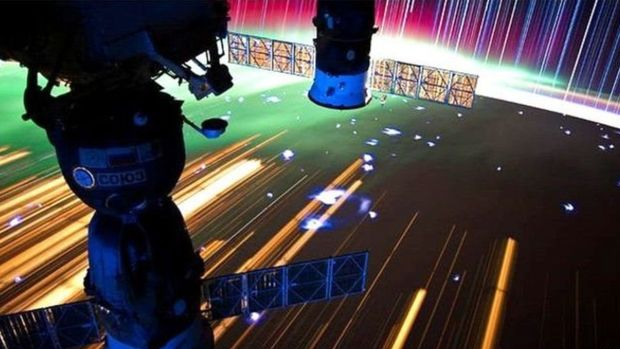|
After watching "Gravity," Amber Yang started having nightmares.
The ninth-grader and astrophysics enthusiast from Windermere, Florida
was naturally drawn the film, which imagined an astronaut's desperate
escape to Earth after the destruction of a NASA space shuttle.
"Gravity" bent some rules of physics, broke others, but its most
terrifying plot device was, in theory, true. A phenomenon known as the
Kessler syndrome, it's a scenario in which low Earth orbit -- home to
the International Space Station and other satellites -- has reached a
critical density of objects. An explosion, or collision between two
objects with intersecting orbits, creates debris, setting off an
exponential chain of collisions causing a catastrophic breakup of
objects above Earth.
|
|
 |
|
"Gravity" (2013) was loosely based on a destructive orbital event known
as the Kessler syndrome.
The implications are chastening, with the debris belt limiting our
ability to reenter space for a significant amount of time.
Yang, now a college first year, has moved on from the nightmares. She's
too busy trying to stop a space debris calamity from ever happening.
Faster than a speeding bullet
Low Earth orbit, starting a few hundred miles up, contains millions of
objects, ranging from space stations and rocket boosters to flecks of
paint. Traveling 10 times faster than a bullet, a speck of debris less
than half an inch wide can impact with the force of a hand grenade,
meaning no object is benign.
The European Space Agency says for many missions, space debris impact
represents the third highest risk of losing a spacecraft behind risks
associated with launch and deployment in orbit. Avoiding collisions
requires constant monitoring and intervention -- the US Department of
Defense's Space Surveillance Network makes hundreds of thousands of
observations every day.
Timothy Payne, chief of operations assessments division at Headquarters
Air Force Space Command (AFSPC), told CNN that AFSPC "routinely provides
to NASA satellite predictions 10 days into the future to support
collision avoidance," but did not elaborate as to how these predictions
were made.
But Yang says she's developed a new way to predict orbits more
accurately, and do so weeks into the future. What's more, she's won a
number of prizes for her solution.
The neural network
"I started researching when I was in my second year of high school," she
told CNN. Yang looked at current tracking methods -- ground and
space-based sensors and radars -- as well as predictive methods such as
an extended Kalman filter, a mathematical algorithm dating from the time
of the Apollo program she says some organizations still use. (Payne
confirmed AFSPC is not among them.)
A close-up photograph showing damage sustained by the Solar Max
experiment from a tiny piece of orbital debris.
By 2016 Yang had turned to artificial neural networks, a computing
system designed to replicate the learning process of the human brain.
They can be used to identify patterns -- patterns like orbital debris
paths.
|
|

|
|
'Satellite catcher' will use magnets to clean up
space junk
Using computer modeling software with a neural network tool, Yang began
programming software of her own. She inputted various laws of physics
and refined the parameters of her neural network. "It was a new
experience for me," she says, "I hadn't really done much coding
beforehand."
To her network she added the coordinates of space debris available to
the public online (accessible via Space-Track. You can see a model of
this real-time data set via stuffin.space). In June 2016, Yang asked her
network to predict three days ahead using 16 days-worth of back data.
She says it was 98% accurate.
"There definitely is a threshold limit as to the accuracy, the further
in advance you go," she cautions, but says it compares favorably to
other methods. Moreover, the network is evolving.
"Artificial intelligence basically operates on the fact that it can be
relearned and retrained," she adds. "So the more data I have... the more
accurate the predictions will be." |